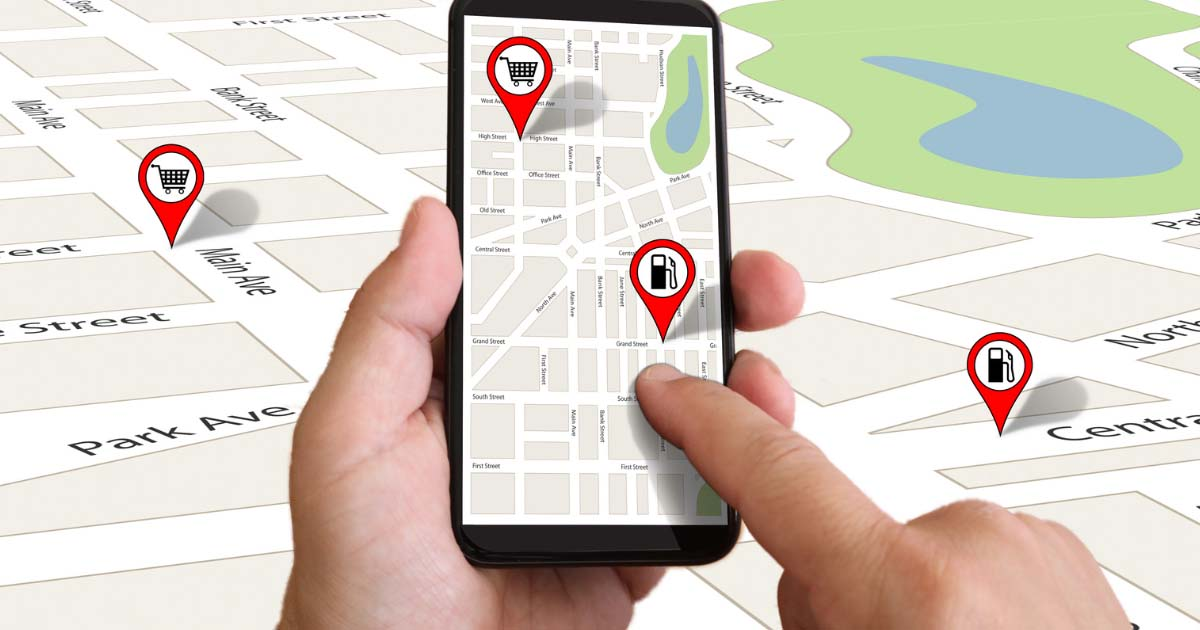Read on to find out more about different strategies and tools that businesses can use to effectively generate leads and grow their customer base.
In today’s competitive marketplace, businesses of all sizes are constantly on the lookout for new and innovative ways to capture more leads and grow their market share.
Lead generation is the process of identifying and cultivating potential customers for your business. It is crucial for driving growth and revenue, and without it, businesses struggle to survive.
Post Contents
ToggleHow to generate free leads for my business?
You will learn different strategies and tools that businesses can use to generate leads effectively and at little to no cost.
We will cover four key “makes” to attract unlimited free leads for any business, tips and tricks for finding leads on social media platforms such as Facebook, LinkedIn and email.
We will also dive into how you can generate completely free leads online with Google My Business, how to improve your local SEO, and how to optimise your blog posts for lead generation.
We’ll also share some lead generation metrics, lead nurturing strategies, case studies, and answers to frequently asked questions about lead acquisition.
Read on to get a comprehensive understanding of how to capture qualified leads for your business and take your first step towards growing your customer base.

4 “Makes” to Attract Unlimited Free Leads for Any Business and Why Every Sales Rep Needs to Know How to Generate Leads
This section will cover the four key elements that businesses need to focus on to attract unlimited free leads and why every salesperson should know how to attract prospects.
Make it Clear: Importance of having a clear message and value proposition
A clear message and value proposition is crucial for generating sales leads. It helps potential customers understand what your business has to offer and how it can benefit them. It is important to keep your message simple, concise and easy to understand.
Make it More about Them and Less about You
Focusing on the customer’s needs and pain points: By focusing on the customer’s needs and pain points, you can tailor your approach to generating leads and show them how your business can provide a solution. By putting the customer first, you build trust and establish a relationship that can lead to long-term loyalty.
Make it Customised
Personalising your approach to different leads: Personalisation is key when it comes to generating leads. By tailoring your approach to different leads, you can increase your chances of success. Whether it’s through personalised emails, targeted social media ads or customised landing pages, personalisation helps to build a connection with your target audience.
Make “Serving” Your Priority
Putting the customer’s needs first and providing value: Providing value is essential for generating leads. By putting the customer’s needs first, you demonstrate your commitment to serving them and building a relationship.
This can be done by providing valuable content, offering free consultations or demos, or by providing excellent customer service.
By focusing on serving your customers, you will build trust and establish a reputation for being a business that truly cares about its customers. This, in turn, will attract more sales leads and ultimately drive more business.
It’s important for every sales representative to understand that lead generation is not just about making a sale, it’s about building relationships and providing value to potential customers.

Identifying Your Ideal Lead Sources
Determine which lead sources align with your business goals and target audience
When identifying your ideal lead sources, it’s important to first consider your business goals and target audience.
Your lead sources should align with the goals of your business and the needs of your target audience.
For example, if your business goal is to increase sales in a specific geographic location, then targeting local lead sources, such as Google My Business, would be ideal. If your target audience is primarily B2B, then LinkedIn and industry-specific trade shows may be more effective lead sources.
To determine which lead sources align with your business goals, start by researching different lead generation channels.
Look at industry-specific websites, social media platforms, and events to see where your target audience is active.
Analyse the demographics of each lead source and compare them to your target audience.
Additionally, consider the cost and effort required for each lead source, as well as the potential return on investment. By analysing these factors, you can determine which lead sources are most likely to generate the best results for your business.
Conduct market research and analyse the data
Conducting market research and analysing the resulting data is crucial for identifying ideal lead sources for your business. This involves gathering information about your target audience, their needs, and the channels they use to make purchasing decisions.
One effective way to do this is through surveys, focus groups, and interviews with current and potential customers. This information can provide valuable insights into what type of leads are most likely to convert into customers and what channels are most effective for reaching them.
Another important aspect of market research is analysing data from various sources such as social media, search engines, and website analytics.
This can provide information on where your audience is spending the most time online, what topics they are interested in, and what type of content they are engaging with.
By analysing this data, you can identify which lead sources align with your business goals and target audience, and then focus your efforts on those channels.
It is also important to track your progress and continuously monitor your lead sources to ensure they are still effective and relevant. With the right approach, you can identify and target the ideal lead sources for your business.
Finding Sales Leads on Social Media – Tips and Tricks and 5 Channels You Can Use to Generate Leads for Free
This section will provide ideas for finding free leads on social media platforms and 5 channels businesses can use to capture leads for free.
Utilising Facebook groups, pages, and ads to generate leads online: Facebook is a powerful tool for generating leads.
Using Facebook groups, pages and ads to promote your business and engage with prospects can help you reach a wider audience and increase your chances of generating leads. By creating valuable content and engaging with your audience, you can build trust and establish a relationship that can lead to more business.
Leveraging LinkedIn’s features such as groups, messaging, and content to reach potential leads: LinkedIn is a great platform for B2B lead generation. By leveraging its features such as groups, messaging, and content, you can connect with potential leads and establish yourself as a thought leader in your industry.
By creating valuable content and engaging with your audience, you can build trust and establish a relationship that can lead to more business.
Utilising email campaigns and lead magnets to capture leads: Email is a powerful tool for generating leads. Utilising email campaigns and lead magnets to promote your business and engage with potential customers can help you reach a wider audience and increase your chances of generating free leads.
By producing content of worth and interacting with your target market, you can establish trust and foster a relationship that can result in increased business.
Blogging and Vlogging
Creating valuable content to attract free leads and convert them into customers: Blogging and vlogging are great ways to attract free leads and convert them into customers.
By creating valuable content that addresses the needs and pain points of your target audience, you can establish yourself as a thought leader and attract potential customers.
Influencer Marketing
The benefits of using influencer marketing to acquire leads and how to do it effectively: Influencer marketing is a powerful tool for generating sales leads. By partnering with influencers in your industry, you can reach a wider audience and establish yourself as a thought leader.
It’s important to choose the right influencer, who aligns with your values and can reach the audience you are targeting. By working with influencers to create valuable and authentic content, you can build trust and establish a relationship with your target audience.
The Power of Utilising Micro-Influencers vs. Macro-Influencers
The pros and cons of using micro and macro influencers for lead generation: Micro-influencers and macro-influencers each have their own advantages and disadvantages when it comes to lead acquisition.
Micro-influencers often have a more engaged and niche audience, while macro-influencers have a larger reach but may not be as engaged. It is important to consider the goals of your campaign and choose the right type of influencer to help you achieve them.
Guest Posting: The benefits of guest posting for lead generation and tips on how to do it effectively
Guest posting is a great way to reach a new audience and generate free leads. By writing guest posts for other websites and blogs in your industry, you can establish yourself as a thought leader and attract potential customers. It’s important to choose the right websites and blogs to guest post on, and to create valuable and relevant content that aligns with their audience.
Cold Calling and Cold Emailing
The benefits of cold calling and cold emailing for lead generation and tips on how to do it effectively: Cold calling and cold emailing can be an effective way to attract prospects, but it’s important to do it in the right way.
By researching your potential leads and tailoring your approach, you can increase your chances of success. It’s important to be respectful of people’s time and to have a clear message and value proposition.
Third Party Listings
The benefits of using third-party listings to acquire more leads and tips on how to do it effectively: Third-party listings can be a great way to increase your visibility and generate free leads.
By listing your business on directories, review sites and other platforms, you can reach a wider audience and increase your chances of being found by interested parties. It’s important to ensure that your business information is accurate and up-to-date on all third-party listings to ensure maximum visibility and credibility.

Go-to Guys to Get Unlimited Free Leads for Any Business and What Does a Lead Gen Company Actually do?
This section will introduce the top lead generation software tools, game-changing tools and discuss the benefits of using a lead generation agency.
Best Lead Gen Software
Introducing the top lead generation software tools and their features: There are many lead acquisition software tools available on the market, each with their own set of features and capabilities.
It’s important to choose the right software for your business based on your needs and budget. Some of the top lead generation software tools include HubSpot, Marketo, and Pardot.
5 Game-Changing Tools
Highlighting tools that can help businesses generate sales leads effectively: In addition to lead capture software, there are other tools that can help businesses generate leads effectively.
These tools include website optimisation tools, social media management tools, and analytics and tracking tools. By utilising these tools, businesses can improve their lead generation strategy and increase their chances of success.
Why use a Lead Generation Agency
The benefits of using a lead generation agency for your business: Using a lead generation agency can provide many benefits for businesses, including expertise, resources, and scalability.
Lead generation companies specialise in generating leads and have the knowledge, experience, and tools to do it effectively. They also have access to resources and technologies that may not be available to individual businesses.
By working with a lead generation agency, businesses can improve their lead generation strategy and generate more sales leads.

Generate Leads Online with Google My Business
This section will cover how to improve local SEO, be accurate and consistent with your business information, where to add your business listings, what information to list on search engines and the best citation sources.
Improve Your Local SEO
The importance of local SEO for lead acquisition and how to improve it: Local SEO is essential for lead generation, as it helps to increase visibility and reach for local businesses. By optimising your website for local search, you can improve your search engine rankings, increase traffic, and generate more free leads.
To improve your local SEO, you can focus on creating high-quality content, building backlinks, and optimising your website for local search keywords.
Be Accurate & Consistent
The importance of being consistent and accurate with your business information: Having accurate and consistent business information is crucial for local SEO and lead capture.
Make sure that your business name, address, and phone number (NAP) are accurate and consistent across all directories and platforms. This will help to improve your visibility and reach, making it easier for potential customers to find and contact you.
Where Should I Add My Business Listings
Where to list your business to improve visibility: There are many places where you can list your business to improve visibility and reach. Some of the best places to list your business include Google My Business, Bing Places, and Yelp. These directories are popular among consumers and can help to increase your visibility and reach, especially in Google search.
What Information Do I Need to List
The key information to include in your business listings: When listing your business, it’s important to include all the relevant information that customers need to know. This includes your business name, address, phone number, website, hours of operation, and a brief description of your products or services.
You should also include images and videos to make your listing more engaging and informative.
Where Are the Best Citation Sources
The top citation sources for your business: A citation is an online mention of your business’s name, address, and phone number.
The more citations you have, the more likely you are to be found online. Some of the best citation sources include online directories, industry-specific websites, and local business associations.
Try These Free SEO Tools on Your Website
The best free SEO tools to optimise your website: There are many free SEO tools available that can help you to optimise your website and improve your search engine rankings.
Some of the best free SEO tools include Google Analytics, Google Search Console, and Yoast SEO. By using these tools, you can identify and fix technical issues, track your website’s performance, and improve your website’s content for search engines.
Blogging – The importance of blogging for lead generation and how to optimise your blog posts for generating leads
Blogging is an effective lead generation strategy that can help businesses to attract and convert sales leads into customers. By creating valuable and relevant content, businesses can establish themselves as experts in their field and provide valuable information to their target audience.
Blogging also helps to increase visibility and reach, as it provides an opportunity to rank for relevant keywords and drive traffic to the website.
To optimise your blog posts for lead development, it’s important to focus on creating high-quality, informative content that resonates with your target audience. This means researching and understanding your audience’s pain points and providing solutions and information that can help to solve their problems.
Additionally, including calls-to-action (CTA) such as signing up for a newsletter, a free trial, or a consultation, will encourage readers to take the next step and become a lead.
Also, incorporating internal and external links, and optimising blog posts for search engines. This can help to increase the visibility of your blog posts and drive more traffic to your website, which in turn can increase the chances of generating completely free sales leads.

Lead Generation Metrics – key metrics to track for lead generation campaigns and how to measure their effectiveness
Measuring the effectiveness of lead generation campaigns is crucial to determine the success of your efforts and make data-driven decisions.
There are several key metrics that businesses should track to evaluate the performance of their lead generation campaigns. These include lead capture rate, lead-to-customer conversion rate, and cost per lead.
Lead acquisition rate, also known as the number of sales leads generated per campaign, is an important metric to track to measure the success of a lead generation campaign. It tells you how many leads were generated as a result of a specific campaign.
Lead-to-customer conversion rate, on the other hand, tells you how many leads were converted into paying customers.
Lastly, cost per lead, which is calculated by dividing the total cost of a campaign by the number of leads generated, helps to determine the cost-effectiveness of a campaign.
By tracking these metrics, businesses can gain insight into how well their lead generation campaigns are performing and make adjustments as needed to improve their lead capture efforts.
Ina addition, you can use analytics tools like Google Analytics and other lead generation software that can help you to track and measure the effectiveness of your campaigns.
Lead Nurturing – how to nurture leads and turn them into paying customers
Lead nurturing is the process of building and maintaining relationships with potential customers – an essential step in the lead generation process, and is critical for turning leads into paying customers. The goal of lead nurturing is to guide leads through the sales funnel by providing them with relevant and valuable information at each stage of the buying process.
Targeted and personalised communication
One of the key ways to nurture leads is through targeted and personalised communication. This means identifying the specific needs and pain points of leads and tailoring your communication to address those needs.
This can be done through email campaigns, personalised landing pages, and targeted ads. Additionally, it’s important to provide leads with valuable content that can help them to move through the buying process. This can include educational resources, case studies, and whitepapers.
Provide a positive brand experience
Another way to nurture leads is by providing them with a positive experience with your brand. This means providing excellent customer service, being responsive to leads’ inquiries, and addressing any concerns they may have.
Additionally, it’s important to build trust with leads by being transparent and providing consistent and accurate information.
Tracking and analysing lead behaviour
Lead nurturing also involves tracking and analysing lead behaviour as they pass through your sales funnel. This means using analytics and tracking tools to gain insight into how leads interact with your brand and what type of content they are engaging with. This information can be used to improve your lead nurturing strategy and tailor it to the specific needs of leads.
Ultimately, lead nurturing is an ongoing process that requires patience and persistence. By consistently providing value and building relationships with leads, businesses can increase the likelihood of converting leads into paying customers.
Conclusion
Lead generation is an essential part of growing any business. By following the strategies outlined in this blog post, businesses can generate free sales leads effectively and at little to no cost.
Through targeting the right audience, creating valuable content, and building relationships with potential customers, businesses can attract more leads and ultimately drive more business.
With the right tools and strategies, businesses can create an effective lead generation strategy and take their first step towards growing their customer base.
Lead Generation FAQs
Answers to frequently asked questions about lead capture and how businesses can acquire leads effectively.
What is lead generation?
Lead generation refers to the process of identifying and cultivating potential customers for a business. It typically involves using a variety of tactics and tools, such as social media, email marketing, and content marketing, to attract and capture leads that can then be nurtured and converted into paying customers.
How can I generate leads for my business?
There are many ways to capture leads for your business, including social media marketing, content marketing, email marketing, and search engine optimization.
Some of the key strategies for generating leads include creating valuable content, engaging with potential customers on social media, and leveraging the power of influencers and third-party listings.
What are the best lead generation strategies?
Some of the best lead generation strategies include social media marketing, content marketing, email marketing, and search engine optimisation.
These strategies are effective because they allow you to reach a wide audience, build trust and credibility, and create a sense of community around your brand.
How can I track the effectiveness of my lead generation campaigns?
To track the effectiveness of your lead generation campaigns, you should measure key metrics such as website traffic, lead capture rate, conversion rate, and customer lifetime value.
By monitoring these metrics, you can identify which tactics and strategies are working well and adjust your approach accordingly.
How can I nurture leads and turn them into paying customers?
Lead nurturing is the process of building and maintaining relationships with potential customers over time. This can be done through a variety of tactics, such as email marketing, content marketing, and social media engagement.
To turn leads into paying customers, it’s essential to establish trust and credibility by providing value, addressing their pain points and needs, and staying in touch over time.




